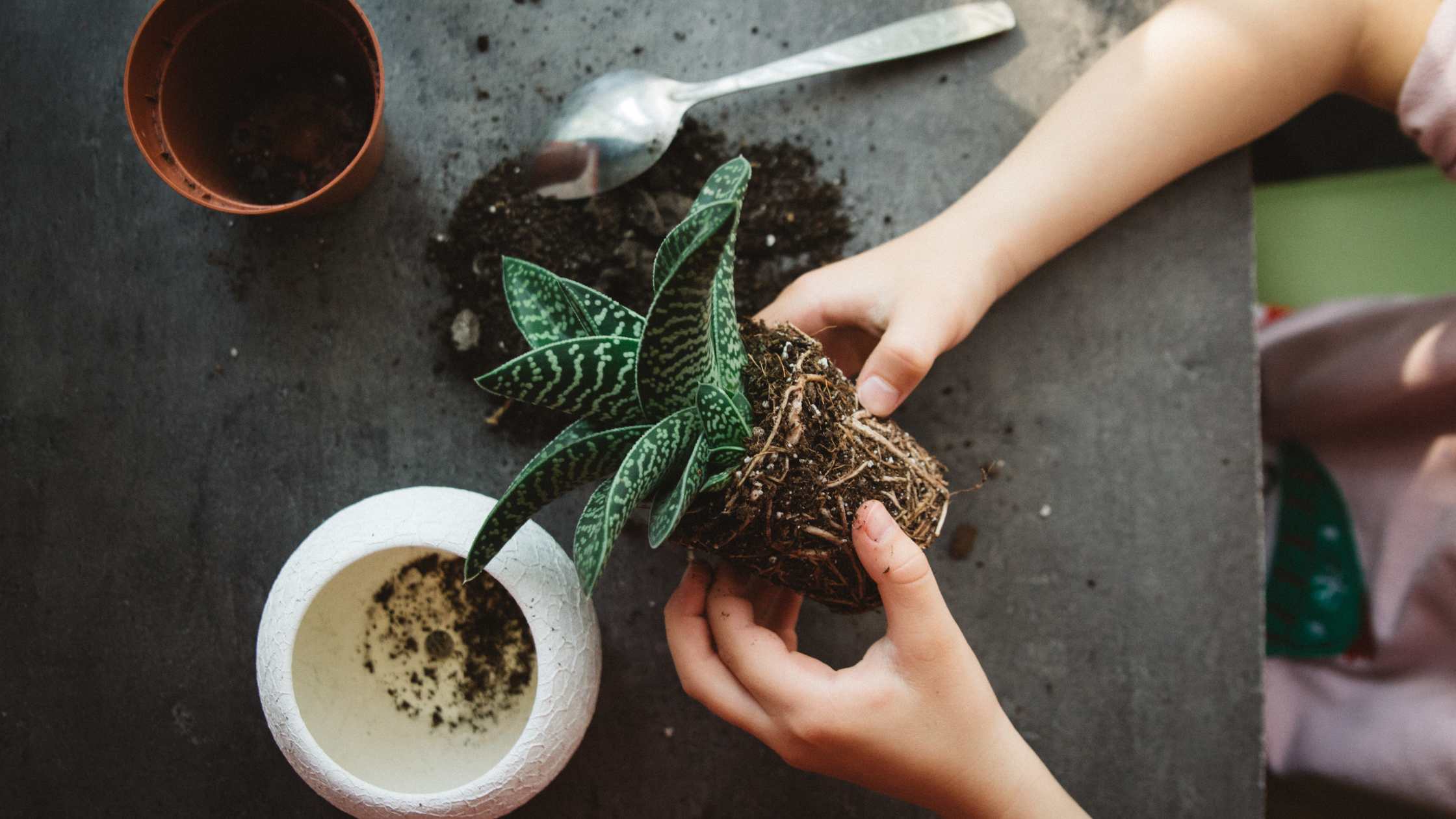Repotting a houseplant can be a beneficial task that helps to refresh the soil, improve drainage, and give the plant room to grow.
It’s generally recommended to repot a plant every one to two years, depending on the size of the pot and the rate of growth of the plant.
When repotting, it’s important to choose a pot that is appropriately sized for the plant and to use a fresh, high-quality potting soil.
Gently remove the plant from its current pot and trim off any damaged or diseased roots before placing it in the new pot. Water the plant well and keep an eye on it for the first few weeks to ensure it is adjusting well to its new pot and soil.
With the right care and attention, your repotted houseplant will thrive.
There are a few signs that it might be time to repot a houseplant:
The plant has outgrown its pot:
If the roots of the plant have started to circle the inside of the pot or have begun to emerge from the drainage holes, it’s time to repot.
The soil has broken down:
If the soil in the pot has become compacted or has broken down into a fine dust, it’s time to repot.
The plant is not growing:
If the plant is not growing as much as it used to or has stopped growing altogether, it might be rootbound and in need of a larger pot.
The pot is damaged:
If the pot is cracked or otherwise damaged, it’s time to repot the plant into a new one.
The plant is unhealthy:
If the plant is yellowing or wilting, repotting it may help improve its health.
If you’re not sure if it’s time to repot your plant, you can check the roots by gently removing the plant from its pot. If the roots are densely packed and are starting to circle the root ball, it’s time to repot.
If you think its time to repot keep reading and we will talk you though how.
Step-by-step guide on how to repot a houseplant:
- Choose a new pot that is about 2 inches larger in diameter than the current pot. Make sure the pot has drainage holes to allow excess water to drain out.
- Add fresh potting soil to the new pot. You can use a general purpose potting soil or choose a specific type of soil for your plant, such as cactus soil for a succulent.
- Gently remove the plant from its current pot by turning it upside down and tapping the bottom of the pot. The plant should slide out easily. If it doesn’t, you may need to gently loosen the roots by gently massaging the sides of the pot.
- Inspect the root ball and trim off any damaged or diseased roots.
- Place the plant in the new pot and fill in any gaps around the sides with more potting soil. Make sure the plant is planted at the same depth as it was in the previous pot.
- Water the plant well, making sure to thoroughly moisten the soil.
- Place the plant in a location that gets the appropriate amount of light for your particular plant.
- Keep an eye on the plant for the first few weeks after repotting to make sure it is adjusting well to its new pot. If the plant starts to wilt or the leaves turn yellow, it may be getting too much or not enough water. Adjust your watering schedule accordingly.
That’s it!
Repotting a houseplant may seem intimidating at first, but with a little care and attention, your plant will thrive in its new pot.

